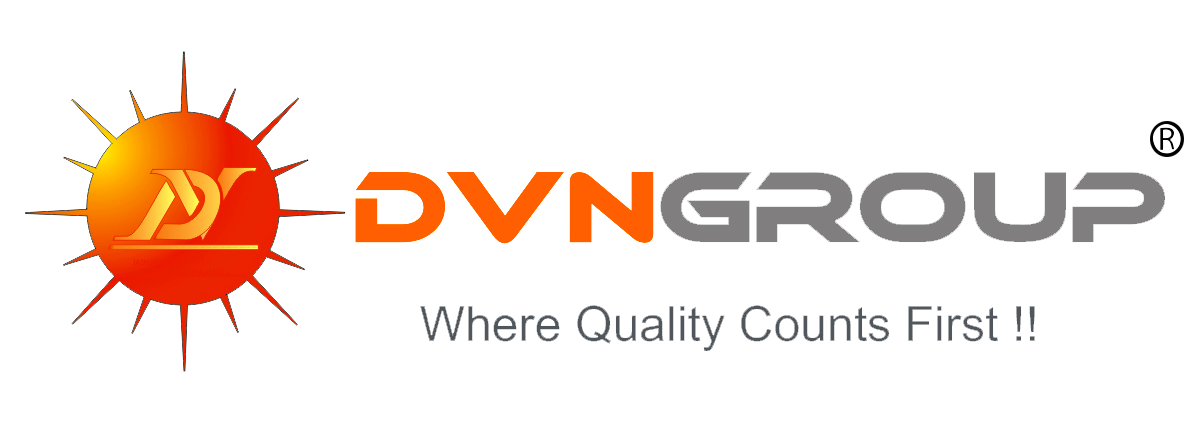Apple (company) – Wiki
Apple Inc. is a California-based consumer electronics company especially known for its smartphone line known as the iPhone, one of the bestselling smartphones of all time. Apple sells different consumer electronics, including tablets, computers, televisions, wireless headphones, and has pursued many other technological endeavors. As of 2022, Apple is led by CEO Tim Cook.
History

From left to right: Steve Jobs, Ronald Wayne, and Steve Wozniak.
Apple Inc. was founded on April 1, 1976 as Apple Computer by Steve Jobs, Steve Wozniak, and Ronald Wayne. Wayne assisted Jobs and Wozniak in establishing the company, but left just twelve days after Apple was founded. He was a good deal older than Jobs and Wozniak and was worried about the company going under and his assets possibly being taken away. He sold all his shares in the company for $800—shares that would have been worth $300 billion in 2022. Apple’s first CEO was named Michael Scott, who joined the company in 1977, and neither Jobs nor Wozniak were equipped to handle the importance of the role. Scott was a domineering CEO and was quoted as saying that firing people made his job fun.
The first Apple computer, Apple I, was released in May 1976 at the price of $666.66. In April 1977, the Apple II was released for $1,295, and the Apple II+ in June 1979 for $1195. Jobs began developing the Apple Lisa in 1979, which he claimed stood for “Local Integrated Software Architecture” but was actually named for his daughter Lisa, whom he wouldn’t originally admit paternity for. It was eventually released in 1983 for $9,995. Apple first went public with its stock on December 12, 1980, offering 4.6 million shares costing $22 each. Scott, Apple’s CEO, left the company in 1981 and was replaced by Mike Markkula.
Wozniak was involved in a serious plane crash on February 7, 1981. Also injured in the crash were Wozniak’s fiancée Candice Clark, her brother, and her brother’s girlfriend, all with less serious injuries than Wozniak’s, who suffered severe head trauma. Wozniak was the pilot and was legally unqualified to fly the plane. The crash was caused by a premature liftoff that caused the aircraft to stall and crash into a 12-foot embankment. The accident gave Wozniak two forms of temporary amnesia, and he was unable to recall both the crash and the following few weeks. He left Apple briefly to focus on his recovery and to pursue different goals; he returned in 1983 as a product developer and fully resigned on February 6, 1987, almost six years on the dot after his plane crash. The plane crash changed Wozniak’s interests and ways of thinking, which led him to leave Apple permanently.
The first Macintosh, or Mac computer, was released in January 1984 at a cost of $2,495, and the Apple IIc was released in April 1984. Sales of the first Mac began dropping the next year, due to the limited number of applications available on Macs. Apple’s next CEO was John Sculley, who took over in 1983. It was under his leadership that Jobs left the company in 1985, after disagreements on how to handle the poor sales of the Mac—Jobs wanted to both drop the price and spend more on advertising. Sculley disagreed, saying it could throw Apple into a loss; he approached Apple’s board of directors on the issue, and they agreed with him. They enabled Sculley to remove Jobs from his position as head of the Mac development division and later from his position as chairman.
The Mac II was released in 1987, as well as the Mac SE. Apple’s first laptop-style computer, the Macintosh Portable, was released in 1989, but did not sell well due to its initial lack of a backlight. Its second portable computer, called the first true Mac notebook, launched in 1991 as the PowerBook 100.
Sculley was replaced by Michael Spindler in 1993, who was replaced by Gil Amelio from 1996 to 1997. Amelio’s retirement that year marked Jobs’s return to the company, and Jobs became Apple’s CEO, a position he would hold until 2011. Jobs launched the iMac in 1998. It sold nearly 800,000 units within five months of launch. In May 2001, Apple’s first retail stores opened in Virginia and California. The first iPod was released in October of the same year and was hugely successful. The iTunes store went live in 2003, Apple’s site for purchasing and downloading songs. iTunes expanded its offerings to music videos and TV shows in October 2005, and movies in September 2006.
On January 9, 2007, Jobs announced the company name change from Apple Computer, Inc. to Apple Inc. The first iPhone was announced and released that year, as was the iPod Touch. The App Store debuted in July 2008. It sold third-party applications for the iPhone and iPod Touch. The first iPad was released in April 2010.
Jobs took a leave of absence from Apple in January 2009 due to health reasons, which lasted until June that year. In January 2011, Jobs took a second leave of absence. It was at this point that Tim Cook began to take over Apple CEO duties. Jobs resigned in August 2011, and in October died from pancreatic cancer, a diagnosis that was not known to the public or most of the company until his death.
The first Apple Watch was released in April 2015. AirPods, Apple’s wireless earpods, were launched in December 2016. In July 2020, Apple committed to reaching 100% carbon neutrality by 2030. In a major iOS update (iOS 14.5), Apple enabled the ability for iPhone users to opt out of ad tracking on apps and websites. Apple was the first company to be valued at a high of $3 trillion in early January 2022.
Products
Apple products run on Apple’s corresponding operating systems, including MacOS, iOS, watchOS, and tvOS. Apple devices have continuity features, which allow for all Apple-brand devices owned by a user to connect and sync information, notifications, and more. The company also produces software as a service and media options. Some examples of those are iCloud, iTunes, ApplePay, the App Store, and Apple TV.
Computers
Apple’s desktop computing hardware centers around its Macintosh brand and includes the iMac, Mac Pro, and Mac Mini lines. Notebook computers include the MacBook Air and MacBook Pro. Some of Apple’s older computer lines include the Apple I and II, the iMac, and the Macintosh Portable.
Phones
The first iPhone launched on June 29, 2007, at MacWorld 2007. In the keynote announcing the device, Steve Jobs described the iPhone as a combination of three hardware concepts:
A widescreen iPod with touch controls; a revolutionary mobile phone; and a breakthrough Internet communications device […] These are not three separate devices, this is one device, and we are calling it iPhone.

Steve Jobs’s keynote announcing the iPhone at MacWorld 2007.
Apple Inc. has released new iPhone hardware each year since its 2007 launch. The company has since segmented the iPhone product line into several other categories, including the iPhone SE, the iPhone Mini, the iPhone Pro, and the iPhone Pro Max. The iPhone’s progression has seen new features such as touch ID, face ID, a front-facing camera, the AI assistant Siri, and 3D touch.
Tablets
Apple’s tablet brand, the iPad, was first released on April 3, 2010 in the United States. The first iPad would not be available for purchase in other countries until May 28. Over 300,000 units were sold at launch. The iPad lines include the regular iPad, the iPad Air, iPad Mini, and iPad Pro. The iPad 2 was released in 2011. The first iPad Mini was released in 2012, the Air in 2013, and the Pro in 2015. The iPad line has grown to support accessories like the Apple Pencil stylus and peripheral devices, such as trackpads and computer mice for navigation.
Watches
Apple Watch is a line of smart watches produced by Apple. Pre-orders for the first Apple Watch began on April 10, 2015, and they were also available in select stores to try on. On April 16, it was announced that the Apple Watch would not be sold in stores, likely due to supply shortages and an unanticipated volume of pre-orders. There were 957,000 pre-orders in the United States on the first day alone, and some models sold out within hours. The official release date for the watch was April 24, but only a small number of pre-orders shipped the opening weekend. Pre-order shipping dates quickly moved from April to June or later for the bestselling models. The first generation Apple watch consisted of three models: everyday, sport, and a luxury model with a band made of eighteen carat gold, which cost $17,000. The latter model did not sell well and was soon discontinued.
Apple launched the Series 1 and 2 Apple watches in 2016. The Series 3 was launched in 2017 and came with cellular ability, which gave it the ability to independently connect to WiFi and defeated the need to pair the watch with an iPhone. One new series has been released each year since then, with the most recent model released being the Series 7 in 2021.
Since its launch, Apple has progressively added various sensors to each Series, including sensors for GPS, heart rate sensing via ECG, fall detection, and others. Apple Watch can be paired with an array of Apple-designed watch bands, which makes the line of smart watches a fashion accessory as well as a health tracking and mobile communications platform. As of January 2022, over 33 million Apple watches have been sold.
Audio
iPod
The iPod is a line of portable music players from Apple. The company launched the first generation of its iPod line in October 2001. The iPod line is segmented into several categories, including the iPod, iPod Nano, iPod Mini, iPod Shuffle, and iPod Touch. Since July 2017, the iPod Touch line is the only iPod-branded product still sold by Apple.
Headphones
Apple originally shipped wired earbuds with both iPods and iPhones. In 2012, Apple released an improved version of its wired earbuds, branded as EarPods. Apple’s original wired earbuds had a standard 3.5mm jack which plugged into the iPhone or iPod’s headphone jack. Apple removed the separate 3.5mm jack connection from iPhones beginning with the iPhone 7 in 2016. Since then, wired earbuds are shipped with a Lightning jack and a 3.5mm-to-Lightning adaptor connector.

First-generation AirPods.
Apple released the first generation of AirPods in December 2016, its line of wireless earbuds. Apple released AirPods Pro, which feature active noise cancellation and spatial audio technologies, in October 2019. AirPods Max, a line of over-ear headphones which are Apple’s highest-end wireless personal audio product, were released in December 2020.
Speakers
Apple’s HomePod is a line of smart speaker products which uses Apple’s Siri digital assistant as a voice interface for controlling the device and issuing commands for media playback and smart home functionality. The original HomePod was launched in February 2018 and was discontinued in March 2021. Apple released its lower-priced HomePod Mini in October 2020.
The iPod HiFi was a discontinued home and portable audio product built to be compatible with Apple’s iPod line of personal digital music players.The iPod HiFi featured high fidelity speakers and was powered either via power outlet or D-cell batteries.
Home entertainment
Apple TV is the smart television hardware designed and sold by Apple. It runs a version of iOS called tvOs. Users have the ability to play audio and video content from another Apple device on a connected television through Apple’s AirPlay wireless protocol. Apple also has a subscription video service called AppleTV+, which can be accessed through its Apple TV hardware platform. On AppleTV+, users can stream shows and movies, including Apple Originals. Using the Apple TV app, users can buy and rent movies, view media from other streaming services, and watch cable TV.
Rumored hardware platforms
AR/VR hardware
Apple has been experimenting with augmented reality (AR) technology since the late 1990s. More recent indicators of Apple’s interest in AR emerged in 2015 with the company’s acquisition of Metaio, an augmented reality startup spun out in 2003 from Volkswagen. Apple repurposed some of Metaio’s technology for its release of ARKit, a software developer kit (SDK) aimed at accelerating the development and implementation of augmented reality applications on iOS devices. In 2017, Bloomberg reported that Apple was working on its own AR headset product, which at the time was projected for release in 2020.
As of March 2021, Apple analyst and supply chain specialist Ming-Chi Kuo reports that Apple may release a helmet-style augumented reality (AR)/mixed reality (MR) headset “in mid-2022” and may release glasses as early as 2025. Apple completed the MR headset production tests for an AR/VR headset in February 2022. in Kuo indicates that contact lenses may also be on the product roadmap, but he doesn’t expect a contact lens product to be released until the 2030s.
Apple Car
Apple has not formally acknowledged rumors that it is working on an electric self-driving car, but over the years more facts have emerged that point to the rumor being true. The rumors began in 2014, when it was reported that Tim Cook assigned former Ford engineer Steve Zadesky as project lead, later revealed as “Project Titan.” In 2017, Apple was given permits by the state of California to test self-driving vehicles on California roads, and in 2018 Apple registered twenty-seven self-driving cars with California’s DMV. In 2019, Apple acquired self-driving car company Drive.ai. Apple has been rumored to be in partnership talks with a number of established automakers, including Mercedes, Volkswagen, Hyundai, and Kia Motors, among others.In March 2022, Porsche CEO, Oliver Blume, announced that Porsche is considering a partnership with Apple. Blume stated Porsche is discussing “exciting common projects” with Apple, but that it is too soon to make any firm decisions on future projects.






